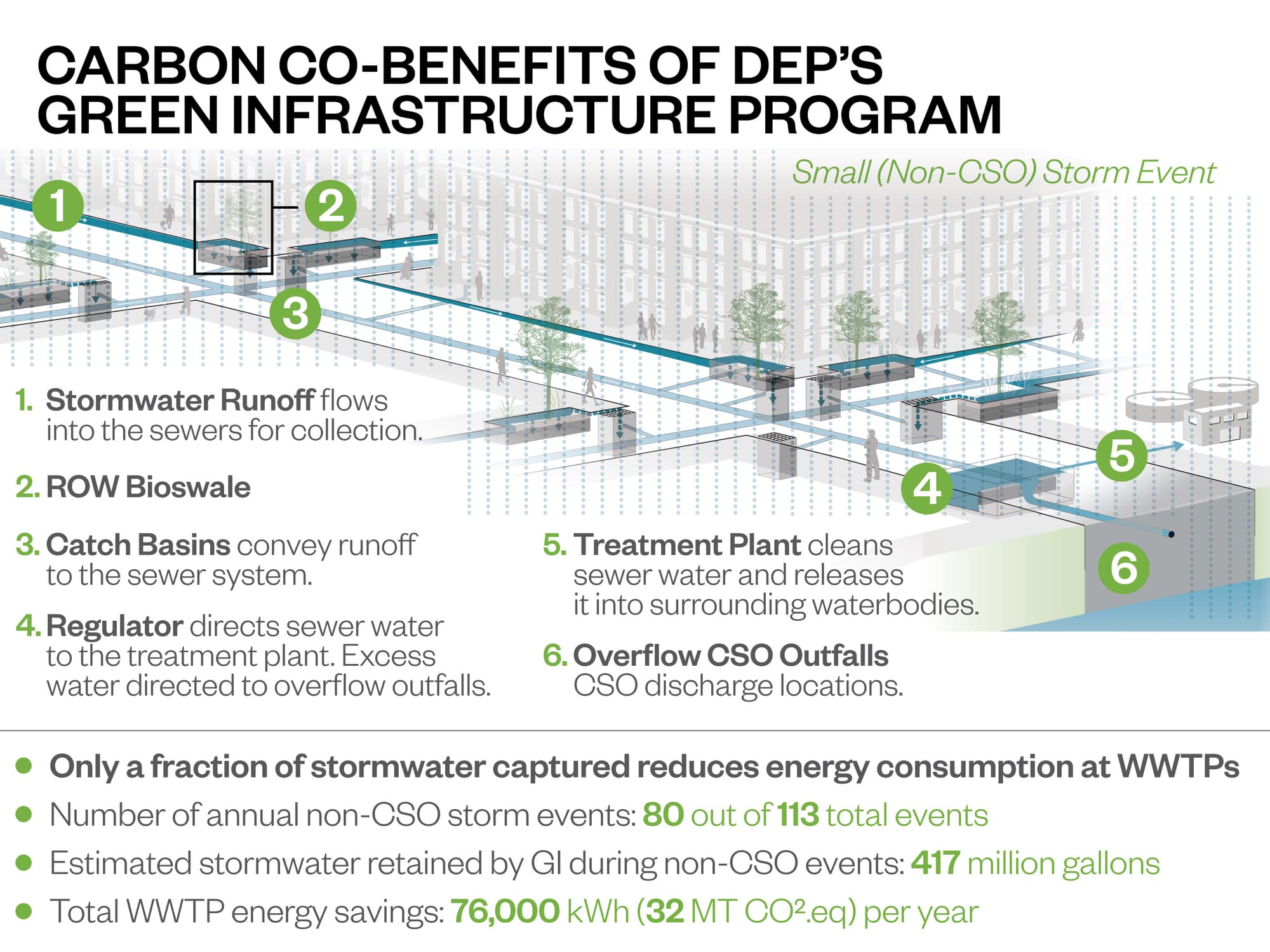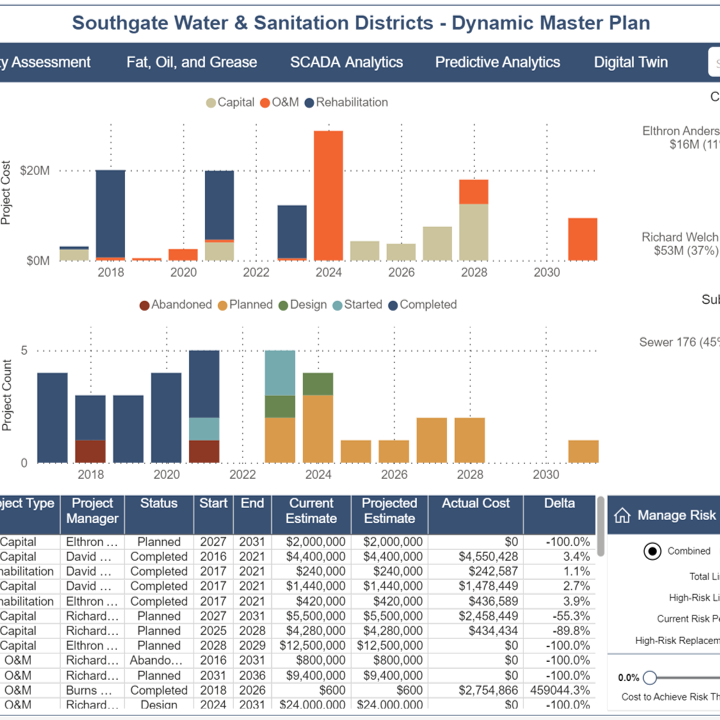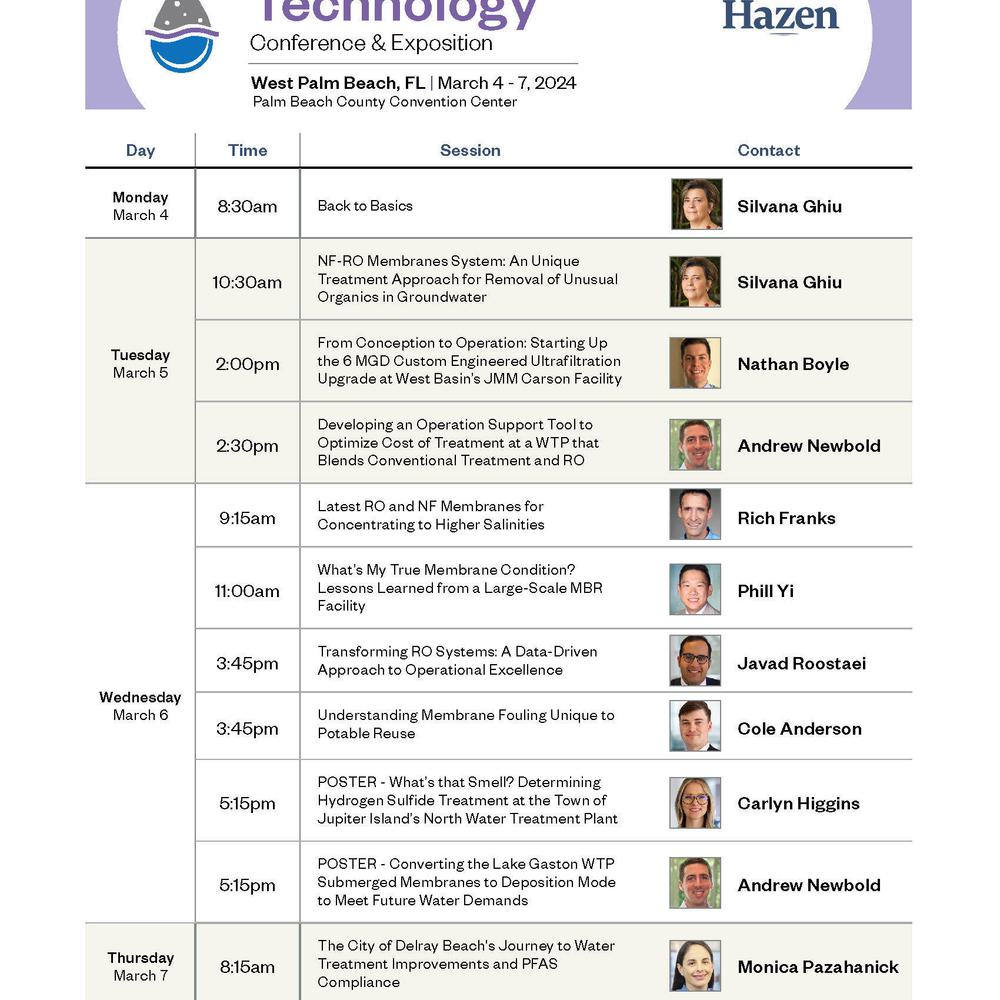NYCDEP Water-Energy Nexus Study
Several NYCDEP programs, such as water demand management and conservation, green infrastructure, in-city wetland restoration, and upstate forest management provide co-benefits that can help New York City towards its greenhouse gas (GHG) targets. DEP’s pioneering Water Energy Nexus study evaluates the GHG co-benefits from such programs for the first time.
Quantifying GHG Benefits
The New York City Department of Environmental Protection (DEP) is charting a path towards major greenhouse gas (GHG) reductions in support of the City’s climate change initiatives. DEP has been progressively working to reduce GHGs emissions from all aspects of its infrastructures and programs, with the ultimate goal of an 80% reduction by 2050 relative to the 2005 baseline.

The study utilized the Global Protocol for Community Scale GHG Emissions, which requires derivation of activity data and emissions factors for each program to allow associated carbon footprints to be calculated. Sewersheds, defined as the geographic areas contributing stormwater and/or sanitary flow to each of the City’s 14 wastewater treatment plants (WWTPs), were used as modeling boundaries. An important component of the study was to understand and model the complex relationships between program activity and resultant GHG co-benefits. Activity data for fiscal year 2015 included 687 million gallons per year (MGY) of avoided stormwater input to the City’s 14 WWTPs. This stormwater was captured by green infrastructure during rainfall events that did not cause combined sewer overflows. Additionally, 528 MGY of reduced City water demand and corresponding wastewater by conserving fixtures and 133 MGY of reduced City water demand through repairs of leaking water mains. Also, direct carbon sequestration by 38 acres of installed green infrastructure and 212 acres of restored tidal and fresh water wetlands. Corresponding Emissions Factors included carbon sequestration rates by green infrastructure and restored wetlands, and electrical consumption offsets at each wastewater and water treatment plant related to flow reductions.
The results were calculated using DEP’s Water-Energy-Nexus Tool - a dashboard style, Excel-based calculator that was developed to allow rapid and convenient estimation, reporting, and visualization of GHG co-benefits from various DEP programs. The modular format of the tool allows expansion to other programs, agencies or cities, thereby providing widespread value to the engineering profession. The tool is designed to communicate results in a clear and transparent manner, and support public outreach and education regarding the social and environmental benefits of DEP’s sustainability programs.
The GHG reduction benefits associated with carbon sequestration from NYC’s 95,000 acre water supply forestlands from over 5 million trees was estimated to be equivalent to emissions from 53,000 cars. The study confirmed that DEP’s strategy to protect the forestlands from unsustainable development is crucial for NYC, both in terms of maintaining drinking water quality and in pursuing GHG reduction targets.
The project was completed on budget and on time, and provides DEP with convenient and rapid reporting of GHG co-benefits for a variety of uses. The tool will guide DEP’s decision making regarding how future water and wastewater related sustainability programs can best support the City’s GHG reduction goals.

Sandeep Mehrotra brings a wealth of expertise related to climate resiliency adaptation, green infrastructure design/stormwater Best Management Practices, and environmental review and impact analysis.
Related Topics:
Project Outcomes and Benefits
- Evaluated the greenhouse gas (GHG) co-benefits from water conservation and green infrastructure programs for the first time.
- Results were calculated using DEP’s Water-Energy-Nexus Tool - a dashboard style, Excel-based calculator that was developed to allow rapid and convenient estimation, reporting, and visualization of GHG co-benefits from various DEP programs.
- The tool is designed to communicate results in a clear and transparent manner, and support public outreach and education regarding the social and environmental benefits of DEP’s sustainability programs.
- The project was completed on budget and on time.
- Named an ACEC NY Platinum Award winner.






















